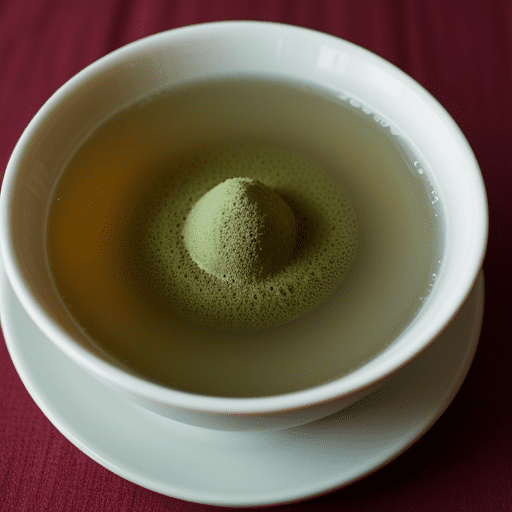Creative Ways to Recycle Scrap Ammo for Sustainability and Safety
Recycling scrap ammunition is the repackaging of materials that have been developed or waste used in a new, unconventional and effective manner. One of the most overlooked forms of waste that will become increasingly important to deal with is scrap ammo, given rising concerns about environmental sustainability and conservation. Not only does this keep these materials out of the landfill, but it eliminates their environmental dangers posed by incorrect disposal. Creative recycling can save practice rounds from languishing in a landfill and allows them to be reborn as something else, be it construction material or art thus lending an extended lifecycle to the metal (and other components). Also, given the importance of safety – these recycling processes need to follow strict guidelines designed to make sure there are no remaining toxicity (or explosive potential) left in the product. In adopting these creative methodologies, people and groups can continue to support an environmentally safe world while at the same time recognizing that military remnants (and weapons waste in general) should be treated with care. This interconnected creative-sustainable-secure cycle results in a future-minded ethos focused on decreasing its carbon footprint.
Understanding Scrap Ammo
This is an important skill to understand for both sustainability and safety. In simplest of terms, scrap ammunition refers to all empty shells or casings as well as failed, out-of-spec rounds that can no longer safely be fired. Storing these materials is dangerous — there are always risks of accidental detonation or environmentally toxic components (such as lead and propellant residues). Having good technique to identify and sort out scrap ammo helps to reduce these risks. Also, acknowledging that a product can be re-used or recycled at end-of-life encourages environmental responsibility. Brass casings, for example can be remelted and used again in various industries rather than being mined new with its associated environmental footprint. Dangerous parts can be safely bonded or reused sooner than being filtered into soil and water. Thus understanding the composition of scrap ammo and its hazards lays down a foundation to create new recycling techniques that conduct safe methods as well keeping in mind this should be environmentally friendly.
Definition and types of scrap ammo
Scrap ammo is just that — ammunition components which are no longer serviceable for their intended purpose. But that includes Expended cartridges, mangled projectiles, live wells and duds. It’s also made to cover surplus military ammunition that has deteriorated and is unsafe for use. Some of the things that most people will be looking to sell you at a local store are scrap ammo; everything from brass casings (which is arguably some of the best type) all way up useful for recycling back into new ammunition and other industrial uses. Although unsafe and very poisonous from our environment, lead bullets however can be taken to reuse in combination with the new ones or more responsibly utilized for a function within battery packs. Misfires may still be a safety concern but can deliver optimal performance and are able to be broken down for parts or scrap. These components help in promoting environmental sustainability since they lead to correct management and recycling while simultaneously assisting safety via good housekeeping, preventing the hazardous accumulation of unusable ammunition.
Safety considerations and handling
When it comes to recycling scrap ammunition, safety is of utmost importance in order to avoid accidents and follow regulations. Most importantly, never assume that some ammo is inert until it has been carefully observed with a magnifying glass by someone who knows what they are doing. That first step greatly reduces the potential for unintentional discharge.
Make sure to store the ammo correctly, in a cool dry place and stable from any sort of heat, or open flames. Wearing personal protective equipment (PPE) such as gloves, safety glasses and ear protection is also vital to keep people safe from dangers such as detonations or exposure to toxic materials.
Also essential is to separate the material. Different types of ammunition dry-fired on the range to prevent potential chemical reactions and other such fun. For example, gunpowder and primers are very sensitive items and must be carefully managed.
Ultimately, coordination with the local government or businesses focused on recycling ammunition supports a legal and environmentally sound process. The new recycling solution is intended to reduce risks, ensure better safety and transform the sustainability of effective recycling in our region.
Environmental impact of improper disposal
More recently, the careless discard of scrap ammo and bullet casings has had a drastic impact on environment by creating pollution which ultimately leads to ecosystem imbalance. Improper disposal of spent ammo, made up of casings, primers and gunpowder can result in the leeching into soil/ground water for toxic metals like lead. The spill does not just hurt plant life, but also the aquatic ecosystem as the contaminants seep into rivers and lakes where fish lives. Furthermore, ammunition combustion byproducts add to air pollution with damaging particulates and gases that hurt human healthThe latter may be released into the atmosphere when waste is not properly managed Through the creative and safe recycling of scrap ammo, we can reduce these adverse environmental impacts, save our natural resources while promoting a healthier environment. It is a must that the process of ammunition disposal due to recycling takes place responsibly so as it does not impact our environment in some way, shape or form and only limit its effects on maintaining how safe our environment stays this will continue for future generations.
Methods to Recycle Scrap Ammo
So, recycling scrap ammunition would not only be a sound ecological and conservation decision but could be bolstered as an enhanced safety initiative. Ballistic Recycling The first type is ballistic recycling in which old bullet and shell casings are gathered together and melted down so that metals such as brass, lead or copper can be retrieved. The facility extracts these metals so they can be sold for recycling into new ammo or other industrial uses. The group is even resorting to pulling down live rounds for the valuable powder,primers and projectiles (where those are recyclable/returnable). Some companies also work on ammo demil, processing live rounds with pyrotechnics to ensure that they are inert before the material is recycled. Most law enforcement agencies and public ranges work with specialized recycling firms that offer safe collection points, as well as see to the prompt removal of used cartridges in compliance with all federal, state and other local environmental regulations. These approaches not only keep dangerous substances from being placed in landfills, but they are also environmentally friendly since melting products like plastics assist reduce the demand for raw materials to be pulled out of sources.
Melting and repurposing metals
In addition to being an innovative method of sustainable recycling, the melting down and reclaiming metals from scrap ammunition is also a safer, more efficient means of doing so. An environmentally friendly method of disposal is to recycle expired ammunition components, brass casings and lead bullets by melting them down in a safe controlled environment. The scrap is initially sorted and cleaned so that it becomes free from contaminants making it as pure. Brass, a material that is frequently used in casings for bullets which has high sustainability since it can be melted to extremely high temperatures and utilized as the same casing type again or other products being made out of this such as jewelry piece, tools like musical instruments including trumpets/flutes etc., parts from bullet cartridges making another recyclables alongside different goods constructed on. They need to hand-gun it off, then melt down the lead (which is hazardous and gets put into battery components like a radiation shielding)
This recycling process has a great advantage of lower reliance on virgin metal production which is commonly harmful to the environment and there by helps in reducing pollution due hazardous waste fill up in landfills. It is also environmentally friendly and safer than scrambling to ensure that you do not get lead poisoning from touched scrap ammo. This model offers a closed-loop material cycle where recycling spent ammo becomes the input to materials that are used and reused with environmental preservation, sustainability and public safety in mind.
Creating new ammunition
I love this concept however: using scrap ammo to reload ammunition sounds like an innovative and good form of recycling. Reloading is the process in which used casings are taken apart and rebuilt with fresh gunpowder, primers, bullets. Brass can be reloaded many times before it is spent, so people who engage in reloading often collect brass casings at the local shooting range.
Not only does this put less waste into a landfill, but also reduces the need for resources and energy required to produce new materials as well as reducing the environmental footprint associated with battery manufacturing. Besides, reloading can minimize risk of misfires or malfunction by enabling shooters to adjust the powder load and bullet type for particular applications that may not be found in factory ammunition, thus enhancing safety and tailor made loads. This practice is not for the novice reloader, but experienced reloaders will find it a way to make ammo more cost effective as well environmentally friendly and personalized.
Conversion into jewelry or art pieces
It is converted into jewellery or artwork, an innovative and ecological process that also serves as a safety measure. This ingenious repurposing practice sees spent shell casings, bullet and other ammunition components turned into beautiful pieces of wearable art — or simply just wear them. These materials are used by jewelers and metalworkers to create unique rings, necklaces, bracelets, and earrings with elaborate designs that showcase the distinctive textures Graveland forms of such metallic elements. This not only reduces waste and the damage that humans cause to the environment, but also takes potentially deadly ammunition out of use so it cannot be re-used or accidentally used incorrectly later on.
I also love that artists reclaim this debris and create beautiful sculptures, figurines as well use in the theme of peace and transforming work. Through powerful imagery, these works comment on the reclaiming of previously combative implements and aesthetics as benign objects of beauty or art. When this practice is embraced, it helps build a culture of sustainability with artistic expression and safety for people in communities.
DIY Projects with Scrap Ammo
Creative and Useful DIY Tips & Tricks Using Scrap Ammo for an Eco-friendly Environment and Improved Safety Provided you have hoarder tendencies which can lead to far worse things, those cartridges and other bits of brass can be reused in creative ways really cutting down on what otherwise might end up as waste. Empty brass casings can be turned into original key-chains, jewelry or other ornaments such as a candle holder or even a picture frame when placed in the middle. These projects are not only a hobby, but they help reduce the environmental impact of recycling metals.
Furthermore, scrap ammo can also be turned into art in the form of sculptures and collage artwork as a strong visual reminder to repurpose recycle. Of course, safety first — make sure all scrap ammo is empty and completely devoid of any ammunition before cleaning it up so there’s no potential for dangerous accidents. These DIY projects are not only assisting with environmental sustainability but also promoting responsible recycling at the local level.
Home decor and furniture enhancements
Sustainability meets creativity by upcycling old bulletsfor use in furniture décor! Empty bullet casings can be polished and turned into beautiful decorative items like lamp stands, picture frames or even clean door handles. These pieces not only bring some rustic or industrial soul to a room but add functionality, while highlighting how waste can be used ingeniously.
Examples of furniture enhancements, such as large calibre rounds being inserted into table legs and the provision for decommissioned artillery shells which can be used as coffee tables or stools. Adding these things into home designs marks a dedication to reusing and to eco-friendly, conscious living. That said, those same metal components are very long-lived and add to the life span of these hand-crafted items from scrap ammo. Not only does this recycling method reduce waste and risk to safety, but it also supports environmentally friendly design practices within the circular economy.
Crafting keychains, bottle openers, and other small items
Using scrap ammo to make keychains, bottle openers or other small items is not only an unique way of recycling but also a message for sustainability and brigthened up the safety-unaware society. Upcycling wasted shell casings and bullet fragments into new items saves resources needed to remanufacture those same components for other uses, reducing the overall impact of ammunition production on our environment even farther. Shell casings can make a unique keychain that acts as either an interesting item of discussion that will take your friends by surprise or just to have in memory. Meanwhile, bottle openers manufactured of larger caliber casings offer both strength and kitsch — functional tools with a bit of history. The upcycling process can include cleaning, cutting and in some cases welding or attaching additional pieces together after deactivating any potential explosive devices. This is not only one of the ways to recycle waste with a handmade concept, but also promotes creativity and craftsmanship. Products developed from GHE’s efforts can target a broad demographic, anywhere between military hobbyists and consumers looking to minimize their carbon footprint whilst negating waste.
Designing garden tools and outdoor fixtures
Creating garden tools such as outdoor fixtures from scrap ammo is an ingenious way of recycling and also a safe one that would be great for people who have safety concerns or are environmentally conscious. Empty shell casings, and some other non-demolition grade munitions components could be remade into strong tools like trowels, rakes or hoes for the garden. A single example is that brass shell casings can be melted into handles or blade components and voila, instead of your traditional materials you have a strong rustic alternative. Furthermore, the distinctive appearance of upcycled ammo can be employed to design attractive and interesting conversation pieces in gardens like plant pots, birdhouses or wind chimes. It is not only giving a second life to materials that otherwise would be wasted, it’s creating healthier spaces in which we live helping foster an environment of sustainability. This ensures that all materials have been successfully deactivated and handled to the best of the company’s ability, avoiding any situation with potential safety hazards — which makes this way a very responsible creative recycling method. It combines the features of reducing, reusing and recycling with its primary focus is to save nature.
Partnering with Professional Recyclers
Collaborating with certified recyclers is actually an appropriate approach to recycle scrap ammunition in a hazardous manner. Commercial recycling facilities have the professional equipment and knowledge necessary for disassembling, disposing of, or repurposing Improvised Ammunition Components correctly. They have strict safety measures to avoid accidents in recycling volatiles, reducing the dangerous factors of handling such materials.
These partnerships are able to help in taking such waste out of the landfills disposing system hence checking on environmental pollution by a bigger percentage. In addition, whilst recycling they can retrieve the rare metals such ased from copper and brass in order to use them for a further processing material. Working with experts like these also means that companies and organizations are complying with local, state and federal regulations on how the ammunition is disposed of to ensure they are not accidentally breaking any laws.
In addition, these partnerships can improve transparency and community confidence while demonstrating a dedication to being an environmentally responsible steward. When agencies and private individuals use professional recyclers, you can rest assured that your sustainability-minded donation is being properly managed in a safe manner with an eye to the environment.
Benefits of using specialized recycling services
Specialized recycling services can return many benefits by dealing with scrap ammo, enhancing sustainability and safety both in equal abundance. First of all, they take care of hazardous waste and residue such as lead (ammunition) to make this well disappear so it does not cause any further contamination and perhaps adverse effects. These services leverage the know-how and infrastructure required to decommission key valuable materials such as brass, copper that can be recycled into industrial applications contributing towards a circular system.
Moreover, specialist waste services follow strictly safety measures ensuring the safest recycling process for preventing accidental explosions or chemical spillages. Well this kind of professional handling protects not only the involved person, but also its surrounding community. Furthermore, with proper recycling services or disposal for individuals and businesses alike such as these will help to free up storage space in your office all while taking the responsibility off of you keeping potentially dangerous products on site. By going for these services one agrees to keep their resources well-managed and security actions in place.
Steps to find and choose the right professional recycler
Now, how to select the best professional recycler for scrap ammo using these steps?
1. **Contact a Recycling Professional**: The first step in recycling your ammunition is to find recycling experts near you or within your vicinity. You can even use online directories, industry forums or the listing on government websites to make a list of such recyclers.
2. **Confirm the Recycler**: Check for recyclers proper recyling documents Make sure their allowed, and are certified for proper disposal of ammo. Seek associations with reputable industry bodies and adherence to eco-regulations.
3. **Examine Expertise**: Check the history and field of expertise in ammunition recycling which will help you to judge its experience. This guy is more likely to actually get you the results he talks about because this would-be service provider has existing experience and testimonials (I hope) from prior buyers.
4. 2) **Safety Protocols**: Ask them what their safety protocols are. Make sure they have strict safety protocols to ensure no accidents or environmental pollutants take place, and follow appropriate disposal methods as well as recycling procedures.
5. Request Quotes & Services: Receive service-specific quotes from the shortlisted recyclers. Compare them and pick the most affordable yet complete solution according to your needs.
6. **Go in person**: If you can go visit the recycling facilities and see flicktories operations. That should give you a good idea of what process they use and the technology behind their work, as well as whether or not this is someone who invests in being professional.
Overall, you follow these steps and then pick a professional recycler who will recycle scrap ammo clean as well as safely.
Case studies and success stories
The most memorable case study of reprocessing scrap ammo usually comes up in the Pentagon’s annual reports on how branches are doing at recycling waste materials — such as tanks and old bungalows (h/t, Bioworld). The base had developed an innovative process to demilitarize and recycle brass shell casings. According to Graham, Fort Hood was able to recycle over 1 million pounds of brass per year by teaming up with a local scrap metal company. This project not only dramatically reduced waste, but also created a significantly sized income stream that was ploughed back into community and environmental projects.
In Michigan, used brass casings at shooting ranges have been an abundant resource for schools through the state to earn money with “Brass For Class”, another successful program. The initiative has reached its goals of providing essential educational resources minus the compromise on safety and environmental standards by selling the scrap brass to recyclers.
These case studies also show that if properly connected and organized, the recycling of scrap ammo can be a profitable activity for both human society as well as to safeguard our environment.
So what have we concluded?
At the end of the day, this type of forward recycling is a unique and promising meeting point for sustainability and safety. Creative solutions such as reusing ammunition components can help mitigate harm on the environment, while also strengthening safety procedures. For example, this applies to turning casings into industrial materials or using parts that are used for practical tools and objects in the style of art or education techniques where not only does waste decrease but raw material go further. Also, strict decommissioning procedures mean that all hazardous elements are rendered harmless protecting local communities and the environment. And again, not just as a means of environmental stewardship but to introduce an over-arching culture of accountability for the industries in which ammunition production relies. The more technology and innovation advances, so will techniques for recycling scrap ammo in a safer sustainable future. In cultivating these processes within individuals and institutions, one fosters a greater dedication to sustainability in both practice as principle thus serving as an example of the diaspora between innovation out of necessity versus restraint.





